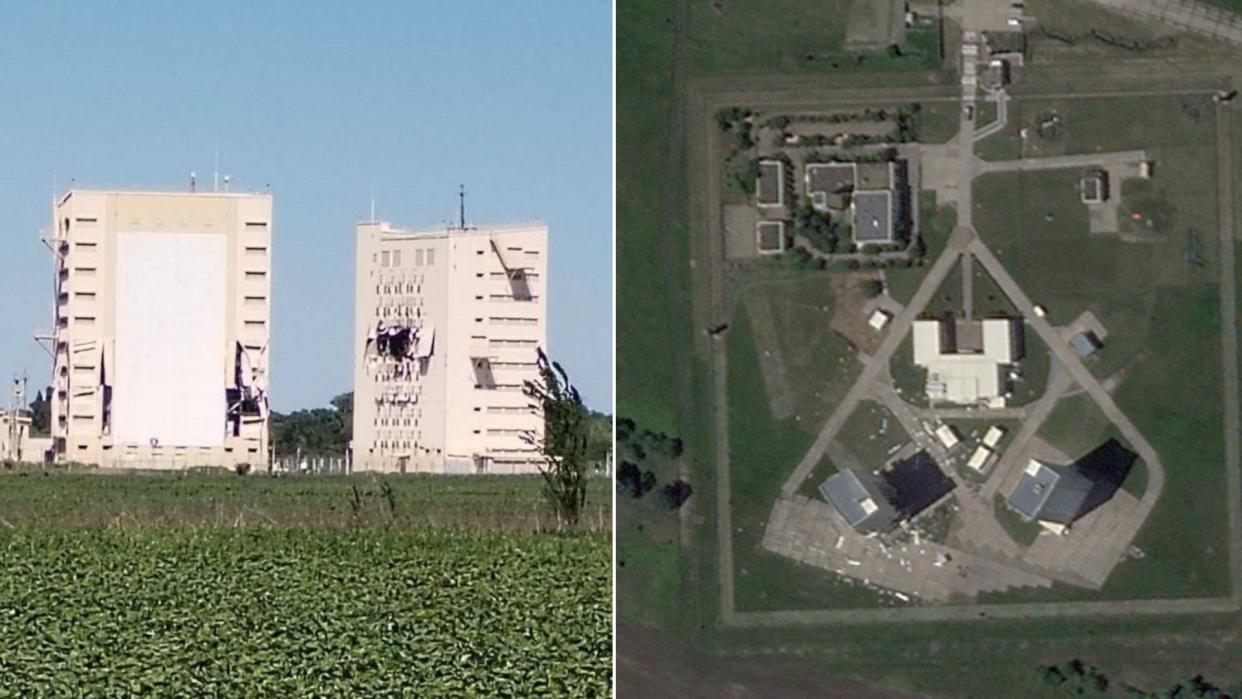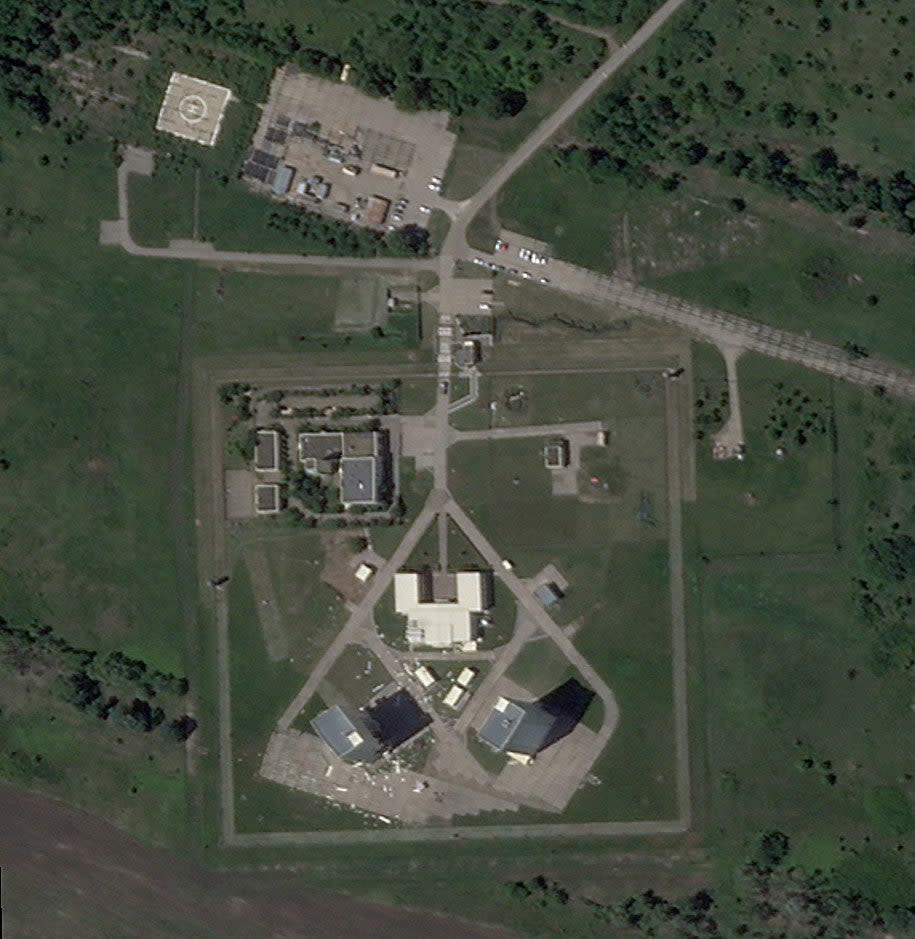Strike On Russian Strategic Early Warning Radar Site Is A Big Deal

Satellite imagery confirms a Russian strategic early warning radar site in the southwestern end of the country was substantially damaged in a reported Ukrainian drone attack earlier this week. This looks to be a first-of-its-kind attack on a site linked to Russia's general strategic defense. As such, it points to a new and worrisome dimension to the conflict, especially when it comes to the potential use of nuclear weapons.
A satellite image taken on May 23 that The War Zone obtained from Planet Labs of the Armavir Radar Station in Russia's southwestern Krasnodar Krai shows significant debris around one of the site's two Voronezh-DM radar buildings. These are ultra-high-frequency (UHF) over-the-horizon (OTH) radars that are part of Russia's nuclear ballistic missile early warning system.

What can be seen in the satellite image aligns with pictures taken from ground level that emerged on social media earlier today, which show severe damage to both structures housing the Voronezh-DMs at Armavir. There is also clear evidence of multiple hits on the radar buildings. It is worth noting that radar arrays are generally very sensitive and fragile systems, and even relatively limited damage can result in a "mission kill," rendering them inoperable for an extended period of time.
The date the Planet Labs image was taken also aligns with initial reports that the attacks on Armavir occurred sometime between May 22 and May 23.
At the time of writing, Ukrainian authorities do not appear to have publicly claimed responsibility for the attack on Armavir. There also do not look to be any official statements from the Russian government. Ukrainian forces have targeted multiple locations within Krasnodar Krai, which lies just across the Sea of Azov, in the past using kamikaze drones.
There has been some speculation that Ukrainian forces may have targeted Armavir over concerns about the site's ability to help provide advance warning about its strikes involving U.S.-supplied Army Tactical Missile System (ATACMS) short-range ballistic missiles.
Since receiving a new tranche of ATACMS in secret earlier this year, the Ukrainian armed forces have been using those weapons to good effect against Russian air bases, air defense nodes, and other targets. The latest batch of ATACMS are also longer-range versions than had previously been delivered to Ukraine's military, which have allowed them to hold more targets at risk.
However, experts and observers have pointed out that the Voronezh-DMs at Armavir are fixed in their fields of view, with the primary focus being areas to the southwest. As an example, in 2013, Russian authorities said that the site had detected what appeared to be a ballistic missile launch into the Mediterranean from Libya.
The northern edge of the coverage area of the two radars reportedly does cover the Crimean Peninsula, but there are questions about what the Voronezh-DM, as an OTH, can 'see' that close and that obliquely, especially if the targets in question are lower on the horizon. These radars are primarily designed to detect ballistic missile launches from much further away.
Regardless of Armavir's direct relevance to the conflict in Ukraine or the exact intended goals of the attack on the site, it has much broader ramifications. The two Voronezh-DMs at the facility are a key part of Russia's larger strategic early warning network and their loss, even temporarily, could only degrade the country's ability to detect incoming nuclear threats. There are also concerns about how this could impact the ability of Russia's overall strategic warning network to evaluate potential threats and eliminate false positives due to possible loss of overlapping coverage in certain areas.
Beyond that, it has been pointed out that the attack on Armavir could meet the conditions the Russian government laid out publicly in 2020 for actions that could trigger a nuclear retaliatory strike. Russia's early warning network is part of the country's broader nuclear deterrent posture.
"The conditions specifying the possibility of nuclear weapons use by the Russian Federation" include any "attack by [an] adversary against critical governmental or military sites of the Russian Federation, disruption of which would undermine nuclear forces response actions," according to the Basic Principles of State Policy of the Russian Federation on Nuclear Deterrence the Kremlin put out two years ago.
All of this follows the start of tactical nuclear drills by Russian forces in the country's Southern Military District, which borders Ukraine, on Tuesday. The Russian Ministry of Defense had first announced the drills were coming earlier this month and said they were "in response to provocative statements and threats by certain Western officials against the Russian Federation." This appeared to be a reference to French President Emmanuel Macron saying that he would not rule out sending troops to Ukraine in the future.
https://www.youtube.com/watch?v=Ov2o08yvXxY
The tactical nuclear drills had already reignited discussions about the potential thresholds for Russia's potential use of nuclear weapons in Ukraine, something The War Zone has explored in detail previously.
This is also just the latest Ukrainian attack on Russian territory to point to vulnerabilities in the country's air defense network, even around highly-prized strategic assets.
It very much remains to be seen how exactly Russia will respond to the attack on Armavir, which could potentially involve new nuclear signaling to authorities in Ukraine, as well as the foreign benefactors. Whether this attack is a sign of the start of a broader campaign on the part of Ukrainian forces to target strategic military sites with limited direct involvement in the ongoing conflict and significant importance to Russia's early warning and nuclear deterrent postures is also unclear.
Whatever the case, the Armavir will have significant ramifications and could be an indication that spillover from the war inside Ukraine is taking on a newly concerning form.
Contact the author: joe@twz.com

